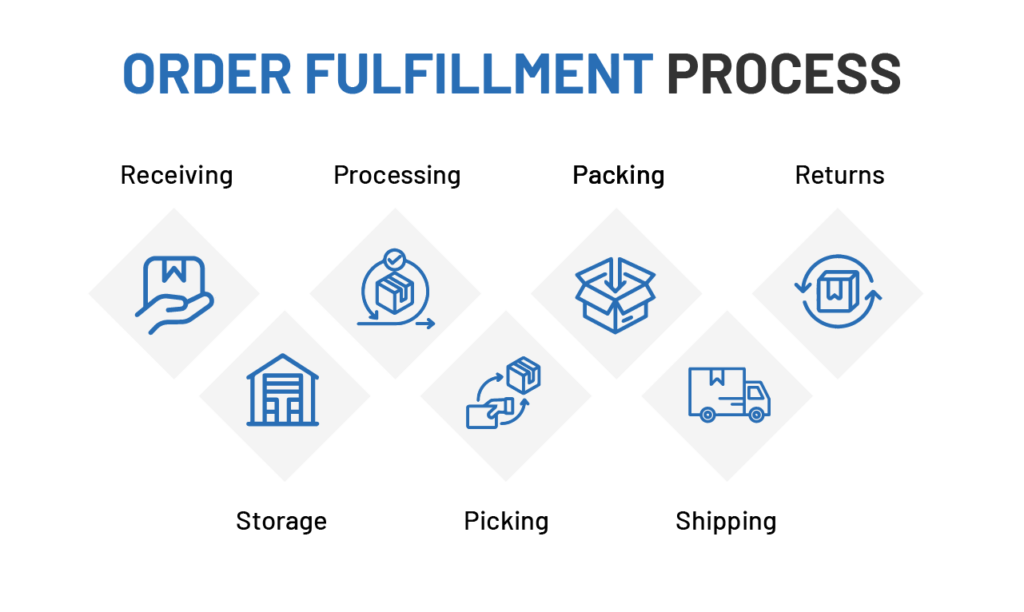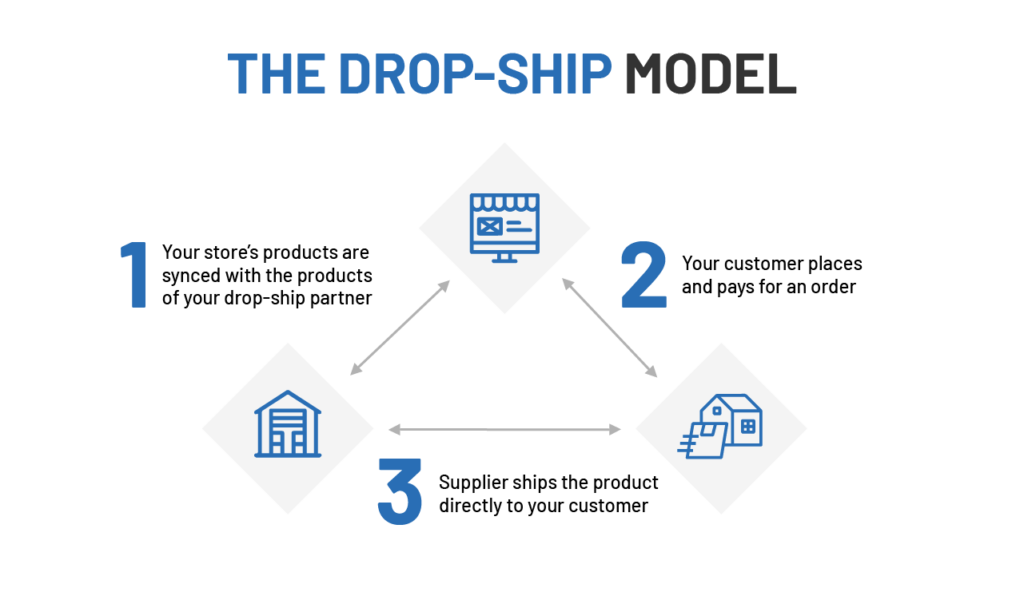
The 3 Order Fulfillment Strategies: Which One is Right for You?
Time to read: 6 minutes
Order fulfillment is a crucial component of every successful eCommerce company. It is an essential logistics component because it focuses on delivering your product where it needs to be: in the hands of your customers. Products must be delivered as quickly, cheaply, and efficiently as possible. It’s critical for developing growing eCommerce companies.
By choosing the appropriate distribution model, you can create a supply and distribution chain that suits your current and anticipated future needs. It’s better to decide this when starting and building your business. Thus, this helps you avoid the likelihood of overhauling your business as its volume and complexity increase.
Receiving, packaging, shipping, and delivering an order to a customer are all parts of the order fulfillment process. Due to each organization’s distinctive characteristics, there is no effective, all-encompassing business strategy. Some businesses handle all aspects of fulfillment in-house. Some are so big that some responsibilities must be shared with a third-party logistics (3PL) supplier.
eCommerce order fulfillment covers two both Business-to-business (B2B) orders and business-to-consumer (B2C). B2B deals with several products that are transported to big-box stores. B2C, on the other hand, covers orders where a single customer’s house is the destination. Your customers may use an online marketplace or the merchant’s website to place a B2C order.
The Order Fulfillment Process
Though the strategies for each company may be different, each order fulfillment process follows the same basic steps:

What Is Order Fulfillment? Critical Processes & Strategies In 2023 (selecthub.com)
1. Receiving
Larger firms can contract with 3PL suppliers to handle this duty, while smaller businesses typically receive and store their inventory.
2. Storage
After arriving at the fulfillment center, products are inventoried before being distributed immediately or placed on short- or long-term hold. Instead of keeping products for future sales, items should only be retained long enough to aid the orderly distribution of commodities for current deals.
3. Processing
The product picking and packing processes are predetermined by an order processing management system for each new customer order. Order processing can be initiated automatically by integrating order management software with the eCommerce website’s shopping cart.
4. Picking
According to details on a packing slip, a picking staff or automated warehouse robots choose the relevant products from the warehouse. The packing slip includes item SKUs, product colors and sizes, unit numbers, and item location in the distribution center’s warehouse.
5. Packing
A packaging team or automated fulfillment robots choose packing materials to obtain the lowest practical dimensional weight. And this is determined by dividing the package’s length, breadth, and height. Optimizing dimensional weight, or DIM weight, is crucial to accelerating transport. It can also reduce shipping costs because delivery trucks have limited room.
6. Shipping and Delivery
The order is forwarded to a shipping node or transportation channel to be delivered to the customer. The actual package weight or the dimensional weight of the package, whichever is larger, is used by shippers and carriers to calculate freight chargeable costs.
7. Returns
The fulfillment process doesn’t end with delivery; customers can return products. Effective order fulfillment strategies must treat returns with the same care as sending out customer orders.
Three Order Fulfillment Strategies That Work Best for eCommerce
Making the best decision for order fulfillment will depend on many elements, such as order volumes, products offered, self-management level, and more.
See which of the three popular order fulfillment methods works best for you.
1. In-House Fulfillment
Businesses that use the in-house order fulfillment model handle order fulfillment themselves without using a third party. Products are stored and shipped by internal staff members both inside and outside of the company’s controlled location.
This strategy is preferable for home-based startups and organizations that manage end-to-end control over the entire operation. When you do fulfillment in-house, you control package handling, on-time delivery, shipping accuracy, and internal returns management. It can also be cheaper since you only need to pay shipping fees and no fulfillment and handling costs. However, it is incredibly time-intensive, and you could miss out on discounted rates usually only offered to shipping companies. Human error is also possible as in-house fulfillment is often done manually, without warehousing technology.
2. Third-Party Fulfillment
Third-party fulfillment is used when you no longer have the time or space to manage internal completion. The task can be distributed with a third-party logistics provider (3PL) or external supplier. You can concentrate on enhancing customer service and business growth because it saves time.
3PLs are skilled at handling both incoming and outbound logistics. This fulfillment approach frees you from inventory management, packing and delivering orders, or managing returns.
Among the many services third-party logistics provide are warehousing distribution, transportation management, inventory management, and more. Using 3PL services can help keep up with numerous activities while paying less for leasing storage space.
3. Dropshipping
Dropshipping is a hands-off method for order fulfillment and manufacturing, akin to outsourcing. Instead of keeping the products on hand, the shop forwards them immediately from the wholesaler or outside supplier. Everything is overseen directly by the manufacturer.

Article Detail (bigcommerce.com)
Following an order, the manufacturer receives the information needed to arrange shipment. By doing so, the middleman is cut out, and overhead expenses are reduced. Dropshipping’s decreased overheads can be especially advantageous for small businesses and newer eCommerce ventures.
The drawback of this strategy is merchants won’t have any influence over the fulfillment procedure, and delivery times plus overall operations may increase.
If you have the resources, performing fulfillment in-house gives you more control over operations and expenses. If your organization has a mix of internal people and resources, consider using a hybrid approach to gain advantages from both fulfillment models.
Order fulfillment may be better off being outsourced if fulfillment and logistical resources and abilities are limited. This makes it possible for your team to concentrate on creating and marketing the product, frequently resulting in increased predictability. With internal fulfillment, you are responsible for hiring the workers, maintaining the warehouse, and guaranteeing that each item is shipped correctly. Many of these tasks are handed off when you outsource order fulfillment.
Important Factors to Consider When Choosing Order Fulfillment Strategies
You’ll need to make some decisions before establishing and implementing an order fulfillment plan for your eCommerce firm. Spend some time gathering customer and shipping insights. Without proper discernment, you might discover that the improvements you chose can hurt your business, cost money, and even valuable clients.
Business Size and Order Volume
Although it may seem obvious, you must know your monthly order volume and how much your product sells before committing to a fulfillment strategy. These metrics are crucial for choosing a cost-effective method that maintains your company’s competitiveness.
For instance, a small merchant with a modest inventory might save costs by managing fulfillment in-house. Since there isn’t much inventory to track, there is no need to outsource to a 3PL supplier. Minimal inventory would also eliminate the requirement for a thorough warehouse management system, reducing expenditures.
Growth is one thing to bear in mind. Small businesses may find themselves outgrowing their present fulfillment tactics as they grow. Avoid becoming too complacent and stagnating using old systems. Constantly look for ways to enhance your fulfillment procedures as you advance.
Sales Channels and Technology Integrations
The success of your order fulfillment strategies is directly related to where products are offered. If your company engages in online sales, your approach must incorporate technology that works seamlessly with your eCommerce platform or online marketplace.
Selling through various channels frequently needs extra tech integrations to send online orders directly to their ideal fulfillment centers. Less complexity should always be the aim. But managing multi-channel sales without the right technology can be challenging.
Merchants may be able to plan and make crucial fulfillment decisions using systems that integrate purchasing, manufacturing, and sales with demand. Establishing order fulfillment techniques can also be aided by utilizing inventory management systems. These platforms give consumers valuable insight into inventory levels. The data will also help them stay informed about changes in demand and available products.
Location
Another crucial component in developing an order fulfillment plan is location. A small-town retailer’s difficulties differ significantly from those of a multinational company operating in different countries. A business in a rural area can suffer if it frequently ships outside its region. It’s a good idea to move to a more strategic location to save money on shipping.
Being close to your clientele can save on costs. Additionally, since goods travel shorter, you won’t need to use expensive long-distance transportation options like planes or ships.
Choosing the best order fulfillment strategy for your eCommerce operation is one of the most critical business decisions. This decision will serve as the foundation for all other systems and methods. It’s crucial that you fully comprehend your choices and choose the approach that is best for you.
ZhenHub supports your eCommerce company’s order fulfillment strategies with automated 3PL software solutions. Simplify your logistics processes with our global fulfillment network and multi-platform integrations — sign-up at our website for instant access. 6.